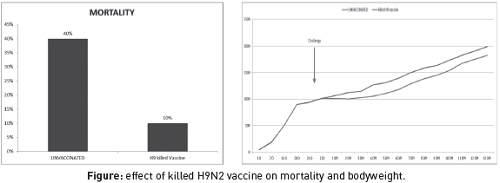



Market Analysis on Avian Influenza Vaccines
Avian Influenza virus has a worldwide distribution and causes disease presented as different forms, ranging from highly pathogenic AI (HPAI) infections caused by H5 & H7 strains and low pathogenic AI (LPAI) infections caused by H9N2 strains.The disease has a massive impact on poultry production. HPAI types lead to trade restrictions, food shortages and industry job losses. LPAI causes severe performance losses in growing flocks leading to reduced productivity and profitability.
Vaccination has become increasingly important in avian influenza control as a part of a multi-pronged approach, complementing the massive efforts expended in controlling the disease through depopulation of birds, cleaning and disinfecting infected premises.
Different types of vaccines have been approved and used for many years in different markets. Killed vaccines and vector vaccines add value by reducing mortality, clinical signs and production loses. Reduced viral shedding into the premises leads to lower virus load in the birds’ environment and so minimises the risk of further spread and exposure to infection1.

1. Delvecchio A. et Al., “Evaluation of different Avian Influenza H9N2 challenge models in commercial Broilers”, Proceedings of 2015 AAAP Symposium, Boston, MA, US
Haitham MALKAWI
Boehringer Ingelheim AH, Lyon, France
_________________________________
Information from the Avian Flu Forum hosted by Boehringer on April 2017








